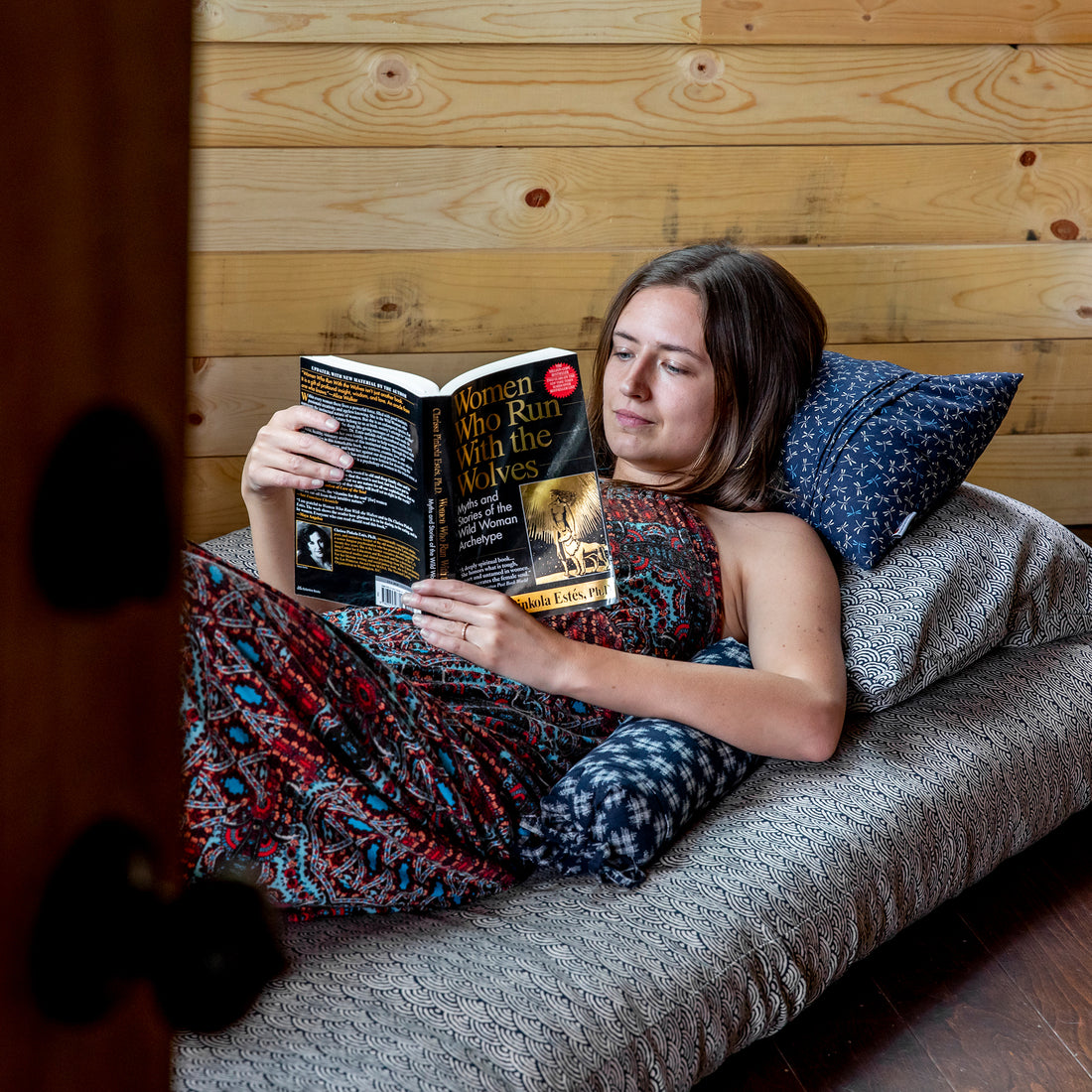In Japanese culture, concepts like minimalism and the philosophy of “less is more” have been in practice for thousands of years. Japanese people have long recognized the significance in keeping only the objects that are absolutely necessary in their homes while living a lifestyle based around simplicity and intention. This is not to say that all Japanese people live this way, but from Zen Buddhists to modern minimalistic Tokyo apartments, these principles can be observed in almost all corners of Japanese society. As a society that's average lifespan is over 80 years old, Japan has perfected the art of keeping its citizens healthy. Even when it comes to sleep style, these concepts hold true.
The tradition of the shikifuton sleep system perfectly represents the Japanese lifestyle. The shikibuton is a type of Japanese bedding that embodies simplicity; an uncomplicated sleeping mat filled with nothing but pure cotton filling, which is intended to be laid on natural tatami grass flooring. Continue reading to learn how switching to a Japanese-style futon can help improve your health and wellbeing.
Improved Sleep Posture
Contrary to what may seem more comfortable, firm mattresses, like a shikifuton, generally support healthier sleep posture than plush mattresses. While the average Western mattress is approximately 10" thick and filled with springs, foam, and other materials, the J-Life traditional shikifuton is only 3-5” thick (depending on which firmness you choose) and filled with nothing but 100% cotton.
When we lay on a plush mattress, its cushioning materials cradle our bodies, causing our spines, necks, and other joints to be poorly aligned for hours on end. Since the average person spends approximately ⅓ of their life sleeping, this poor positioning can take a toll on our muscles and joints over time.
The firmness of a shikifuton mattress creates a flat, even sleeping surface with just enough give to comfort the curvature of our bodies without overly conforming to it. Many people who switch from a spring mattress to a Japanese futon mattress report an initial brief adjustment phase (as the body adjusts to engaging muscles that were previously allowed to relax during sleep), but then find they enjoy deeper sleep and wake up without many of the chronic aches and pains they used to experience in the mornings.
Ideal for Small & Multipurpose Spaces
In Japan, the typical house is much smaller than what is considered average in North America. For this reason and more, Japanese homes have long embraced principles of kanso (similar to minimalism) and creating multipurpose spaces.
A tatami room (washitsu; 和室), for example, is a traditional Japanese space that is intended to serve a range of purposes, such as sleeping, dining, entertaining, and more. As the name implies, tatami grass mats are used as flooring in these Japanese-style rooms.
The Japanese sleep system is perfectly tailored to suit these spaces; shikifutons are considerably smaller than a Western mattress and do not require a bulky bed frame to support them. Shikibuton beds are designed to be laid directly onto a tatami mat for sleeping and can be rolled up and stored during the day to free more space. Shikifuton beds are also versatile enough to be used as chairs, couches, and other purposes.
More Hygienic Than Other Mattresses
All sleep surfaces collect unwanted sweat, moisture, dust mites, and dirt with use - that is simply the nature of mattresses! Due to the bulkiness and thickness of a typical spring mattress, though, it is nearly impossible to thoroughly clean them.
Even if you're vacuuming, spot cleaning, and changing your sheets regularly, it’s likely only penetrating the surface of the mattress and not reaching anything built-up within. As mattresses get older and dirtier, the risk of mold and mildew growth increases exponentially.
Caring for a shikifuton is a unique process, but is much easier than caring for a spring mattress. Thanks to their all-natural cotton filling, moisture buildup is the only true issue they can face, and is relatively easy to prevent. We also offer a certified organic shikibuton for those who prefer an extra hypoallergenic mattress. Organic cotton is excellent for those with allergies, sensitive skin, and chemical sensitivities.
Changing your shikifuton cover often and regularly “sunning” your Japanese bed is the best way to ensure that your new shikifuton lasts its full lifespan. Visit our blog, Caring for Your Shikifuton, to learn more about shikifuton care.
Pairing your futon with other traditional Japanese bedding elements, such as hypoallergenic silk kakefuton duvets, washable silk bedding, silk filled pillows, and sobakawa buckwheat pillows also helps to keep your new bed hygienic and comfortable. For those who are particularly worried about spills or moisture damaging their Japanese floor mattress, our Shikifuton Protective Cover might be right for you.
A quality spring mattress can easily cost $1500 or more, cause lasting discomfort and joint pain, and create an unsanitary sleeping environment. Switching to a shikibuton mattress is much more affordable and will open up a world of comfortable and clean sleep - the traditional Japanese way.





3 comments
Well, Sky, you could try using a futon dryer if there is no access to sun in your room.
But, how long does it stay in the sun ? Would a big window letting sun in be enough ?
Well I live in an apartment with no way to sun it so this would not work for me. I’ll stick to my Tuft and Needle.